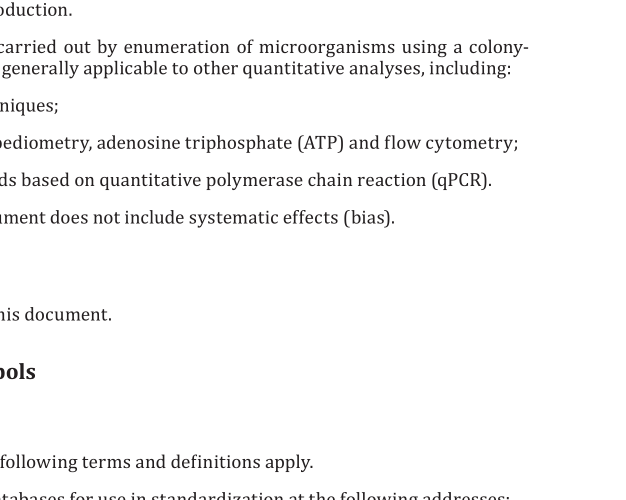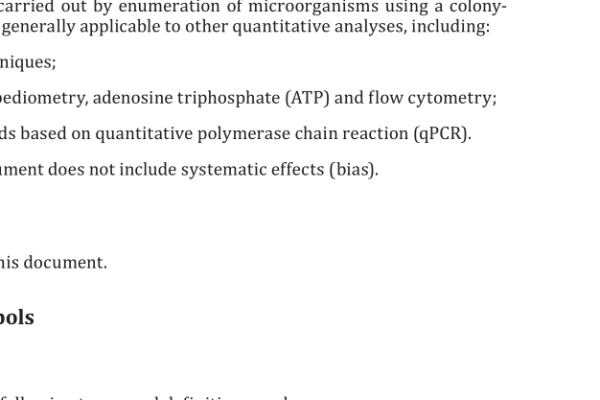ISO 19036:2019 pdf download – Microbiology of the food chain — Estimation of measurement uncertainty for quantitative determinations.
5.2 Estimation of technical uncertainty 5.2.1 General aspects Technical uncertainty is estimated from the standard deviation of reproducibility, s R , on the final result of the measurement process. As such, technical uncertainty is a characteristic of the method and technical uncertainty estimated for one method cannot be applied to other methods. Ongoing estimation of MU should be made to show that the estimate of uncertainty remains relevant and that the test results are under control. Reassessment of MU estimate shall be made following changes to any (critical) factor (see 5.1.1 and 5.1.4) that is likely to affect the results obtained with that method in any significant way. Three different possibilities are presented in this document for estimation of the standard deviation of reproducibility. They are based upon repeated measurements of nominally identical material. The preference order is as follows: — option 1: intralaboratory reproducibility, i.e. reproducibility estimated within a laboratory (see 5.2.2); — option 2: reproducibility derived from results of a method validation interlaboratory study (see 5.2.3.1); — option 3: reproducibility derived from results of an interlaboratory proficiency test (PT) (see 5.2.3.2). 5.2.2 Reproducibility standard deviation derived from intralaboratory experiments, s IR 5.2.2.1 General aspects Option 1, intralaboratory reproducibility, is the preferred option for deriving technical MU since it enables a laboratory to attach the MU value to the results that it reports, in line with the definition of MU. The experimental protocol described in this clause should take into account as many as possible of the uncertainty sources identified in (see 5.1). 5.2.2.2 Experimental protocol 5.2.2.2.1 General aspects The protocol for analysis of exactly two test portions for each laboratory sample is shown in Figure 2, for which the corresponding calculations are provided in 5.2.2.3. For other cases (i.e. more than two test portions for some or all laboratory samples), the protocol and calculations are given in Annex A. For each test method, perform the experimental protocol of Figure 2 for at least ten laboratory samples and repeat it to give at least two acceptable results for each laboratory sample. 5.2.2.3.1 provides indications of acceptable values. Depending on the circumstances, this can require more than ten laboratory samples and/or more than two test portions for each laboratory sample. The data from different laboratory samples are collected over a period of time as part of a special exercise or as part of a laboratory’s routine quality management procedure. In that case, it should be ensured that the experimental design principles in this clause are followed.
ISO 19036:2019 pdf download – Microbiology of the food chain — Estimation of measurement uncertainty for quantitative determinations






